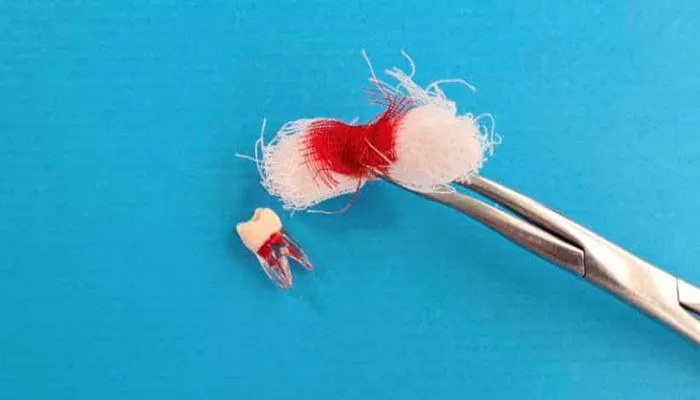Wisdom tooth extraction is a common dental procedure. After the surgery, proper care is essential to ensure a smooth recovery. One important aspect of post-operative care is managing the gauze placed in the mouth. In this article, we will discuss when and how to remove the gauze after wisdom tooth extraction, along with tips for a successful recovery.
What Happens During Wisdom Tooth Extraction?
Wisdom teeth, or third molars, typically emerge in late adolescence or early adulthood. Many people need to have these teeth removed due to crowding, impaction, or other dental issues. The extraction process involves:
Anesthesia: The dentist or oral surgeon will administer local anesthesia, sedation, or general anesthesia to ensure you are comfortable during the procedure.
Extraction: The dentist will carefully remove the wisdom teeth. This may involve cutting through gum tissue and bone.
Gauze Placement: After the extraction, the dentist will place gauze over the extraction sites to help control bleeding.
Why Is Gauze Used After Extraction?
Gauze plays a critical role in the healing process after wisdom tooth extraction. Here’s why:
Control Bleeding: The gauze helps absorb blood and promotes clot formation at the extraction site.
Promote Healing: By applying pressure, the gauze aids in the formation of a stable blood clot, which is essential for healing.
SEE ALSO: How Long Until Blood Clots Dissolve Wisdom Teeth
How Long Should Gauze Stay in Place?
The duration for which you should keep the gauze in place can vary based on several factors, including:
Type of Extraction: Simple extractions may require less time with gauze than surgical extractions.
Bleeding Level: If bleeding is significant, you may need to keep the gauze in place longer.
General Guidelines
Initial Time: Keep the gauze in place for about 30 to 45 minutes after the procedure. This allows time for a blood clot to form.
Check for Bleeding: After 30 to 45 minutes, gently remove the gauze and check for any active bleeding. If bleeding continues, replace the gauze with a new piece and apply gentle pressure for another 30 to 45 minutes.
Repeat as Needed: If bleeding persists after several attempts, contact your dentist or oral surgeon for further advice.
Signs It’s Time to Remove The Gauze
You can remove the gauze when you notice the following:
Minimal Bleeding: If the gauze is only lightly stained with blood, it’s a good sign that bleeding is under control.
Formation of a Blood Clot: If a firm clot has formed at the extraction site, it indicates that it is safe to remove the gauze.
Comfort: If you feel discomfort from the gauze, it may be time to remove it, especially if bleeding has stopped.
How to Remove The Gauze
When you are ready to remove the gauze, follow these steps:
Wash Your Hands: Before touching your mouth or the gauze, wash your hands thoroughly to prevent infection.
Gently Remove the Gauze: Carefully pull the gauze out of your mouth. Do this slowly to avoid disturbing the blood clot.
Inspect the Site: Look at the extraction site to ensure that the bleeding has stopped or is minimal.
After Removing The Gauze
Once you have removed the gauze, follow these care tips:
1. Avoid Rinsing
Do not rinse your mouth for the first 24 hours after the extraction. Rinsing can dislodge the blood clot and lead to a painful condition called dry socket.
2. Manage Discomfort
You may experience some pain and swelling after the extraction. Here are some ways to manage discomfort:
Ice Packs: Apply ice packs to the outside of your cheek for the first 24 hours to reduce swelling.
Pain Relievers: Take over-the-counter pain medication as directed by your dentist. Follow the recommended dosage.
3. Follow a Soft Diet
Stick to soft foods for the first few days after the extraction. Foods like yogurt, applesauce, and mashed potatoes are good options. Avoid hard, crunchy, or spicy foods that may irritate the extraction site.
4. Stay Hydrated
Drink plenty of fluids, but avoid using straws for the first few days. The suction from a straw can dislodge the blood clot.
When to Contact Your Dentist
While some bleeding is normal after wisdom tooth extraction, certain signs may indicate a problem. Contact your dentist if you experience:
Excessive Bleeding: If bleeding does not stop after several hours or if it becomes heavy.
Severe Pain: If pain increases significantly after the first few days or if it does not improve with medication.
Signs of Infection: Symptoms such as fever, chills, or pus discharge from the extraction site.
Conclusion
Removing the gauze after wisdom tooth extraction is a crucial step in the recovery process. Follow the guidelines for when to remove it, and pay attention to your body’s signals. Proper care will help ensure a smooth recovery and minimize complications. If you have any concerns during your recovery, do not hesitate to reach out to your dentist for guidance. By taking these steps, you can promote healing and get back to your normal routine as quickly as possible.

